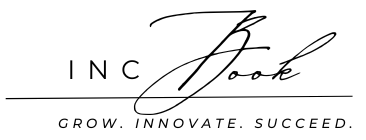Securing a business loan to purchase used commercial vehicles can be a game-changer for companies looking to expand their fleet without breaking the bank. Whether you’re a logistics company needing additional trucks, a construction firm looking to upgrade your equipment, or a small business that relies on transportation, finding the right loan is crucial. This guide will help you navigate the complex world of business loans specifically tailored for purchasing used commercial vehicles, offering insights into loan types, interest rates, repayment terms, and more.
Insider Tips
1. Opt for Online Lenders for Faster Approval
- Tip: Online lenders typically have faster approval processes compared to traditional banks. They use automated systems to evaluate your application, which can lead to approval within hours or even minutes, making them ideal for emergency cash flow needs.
2. Prioritize Lenders with Prequalification Offers
- Tip: Look for lenders that offer prequalification without a hard credit check. This allows you to quickly assess your eligibility and potential loan terms without affecting your credit score, enabling faster access to emergency funds.
3. Utilize Existing Business Relationships
- Tip: If you have an existing relationship with a lender, leverage it for quicker loan approval. Banks and credit unions where you already have accounts or a history of transactions are more likely to expedite your loan application process, especially if you’ve demonstrated reliability in the past.
4. Prepare Documentation in Advance
- Tip: Speed up the loan process by having all necessary documentation ready before applying. This includes your business’s financial statements, tax returns, and details of the used vehicle you plan to purchase. Being well-prepared can significantly reduce approval time.
5. Consider a Bridge Loan for Immediate Cash Flow
- Tip: Bridge loans are designed for short-term financing needs and can be approved quickly. They provide immediate funds to cover the purchase of a used commercial vehicle until a more permanent financing solution is in place.
6. Choose Lenders Offering Instant Funding
- Tip: Some lenders not only approve loans quickly but also offer instant funding, where the funds are deposited into your account the same day. Prioritize these lenders for the fastest access to cash flow when facing an emergency.
7. Leverage Invoice Financing
- Tip: If your business has outstanding invoices, consider using them as collateral for quick approval loans. Invoice financing can provide immediate cash flow by advancing a percentage of your unpaid invoices, which can be used to purchase the vehicle while waiting for client payments.
8. Tap into Business Credit Lines
- Tip: If you have an existing business line of credit, this can be a quick way to access funds without going through a lengthy approval process. Drawing on this credit line allows for immediate cash flow to cover the purchase of a used vehicle in an emergency.
| IncBook: Fast Loan Types | ||||||
| Loan Type | Interest Rate | Repayment Term | Down Payment | Eligibility Criteria | Pros | Cons |
|---|---|---|---|---|---|---|
| Secured Vehicle Loan | 4.5% – 8.0% | 3 – 7 years | 10% – 20% | Good credit score, vehicle as collateral | Lower interest rates, longer terms | Requires collateral, stricter eligibility |
| Unsecured Business Loan | 8.5% – 15.0% | 1 – 5 years | None | Strong cash flow, good credit history | No collateral required, quick approval | Higher interest rates, shorter terms |
| Equipment Financing | 5.5% – 9.0% | 3 – 5 years | Varies (up to 15%) | Equipment as collateral, steady revenue | Finances up to 100% of vehicle cost, tax benefits | May require a higher down payment |
| Line of Credit | 6.0% – 12.0% | Revolving | None | Established business, good credit score | Flexibility in usage, pay interest only on what is used | Variable interest rates, may require personal guarantee |
| SBA 7(a) Loan | 7.5% – 9.5% | 5 – 10 years | 10% or more | Small businesses, strong financials | Lower down payments, longer terms | Lengthy application process, more paperwork |
Alternative Solutions to a Cash Crunch
When a business faces cash flow problems, implementing budget cuts can be an essential strategy to stabilize finances quickly. The goal is to reduce expenses without compromising the core operations that keep the business running. Here’s a quick guide to making effective budget cuts:
1. Prioritize Critical Operations
- Focus on maintaining the essential functions that directly impact revenue generation and customer satisfaction. Identify areas where spending can be minimized without affecting your primary operations, such as scaling back on non-essential services, subscriptions, or projects.
2. Negotiate with Suppliers and Vendors
- Reach out to your suppliers and vendors to negotiate better terms or discounts. Many suppliers may be willing to offer temporary reductions or extended payment terms, which can ease immediate cash flow pressures.
3. Implement a Hiring Freeze
- Pause any non-essential hiring until the cash flow situation improves. Consider reallocating current staff to cover critical areas instead of bringing in new hires. This can also include limiting overtime and temporarily reducing hours where possible.
4. Reduce Discretionary Spending
- Cut back on discretionary expenses, such as travel, entertainment, and non-essential marketing. Redirect these savings towards maintaining core operations and improving cash flow.
5. Review and Cut Underperforming Assets
- Assess your inventory, equipment, and other assets to identify underperforming or non-essential items. Selling or leasing these assets can provide an immediate cash injection while reducing maintenance and storage costs.
6. Defer Non-Urgent Capital Expenditures
- Postpone any planned capital expenditures that are not immediately necessary. This includes delaying upgrades, expansions, or significant purchases until the cash flow situation stabilizes.
7. Consider Temporary Salary Adjustments
- Discuss with your team the possibility of temporary salary reductions or deferrals, especially at the management level. This approach should be handled sensitively, ensuring transparency and a plan for compensation when finances improve.
8. Optimize Energy and Resource Use
- Reduce utility costs by optimizing energy use and cutting down on waste. Simple changes like adjusting thermostat settings, turning off unused equipment, and implementing energy-efficient practices can lead to significant savings over time.
9. Outsource Non-Core Functions
- Outsource non-core functions like IT support, HR, or bookkeeping to reduce overhead costs. Outsourcing can often provide the same level of service at a lower cost than maintaining these functions in-house.
10. Monitor and Adjust Regularly
- Continuously monitor your financial situation and adjust the budget cuts as necessary. Regular reviews will help ensure that your business remains agile and can respond quickly to any changes in cash flow.
By strategically implementing budget cuts, you can quickly address cash flow issues while keeping your business on track. The key is to make thoughtful decisions that protect your core operations and position your business for recovery and growth once the financial situation improves.



